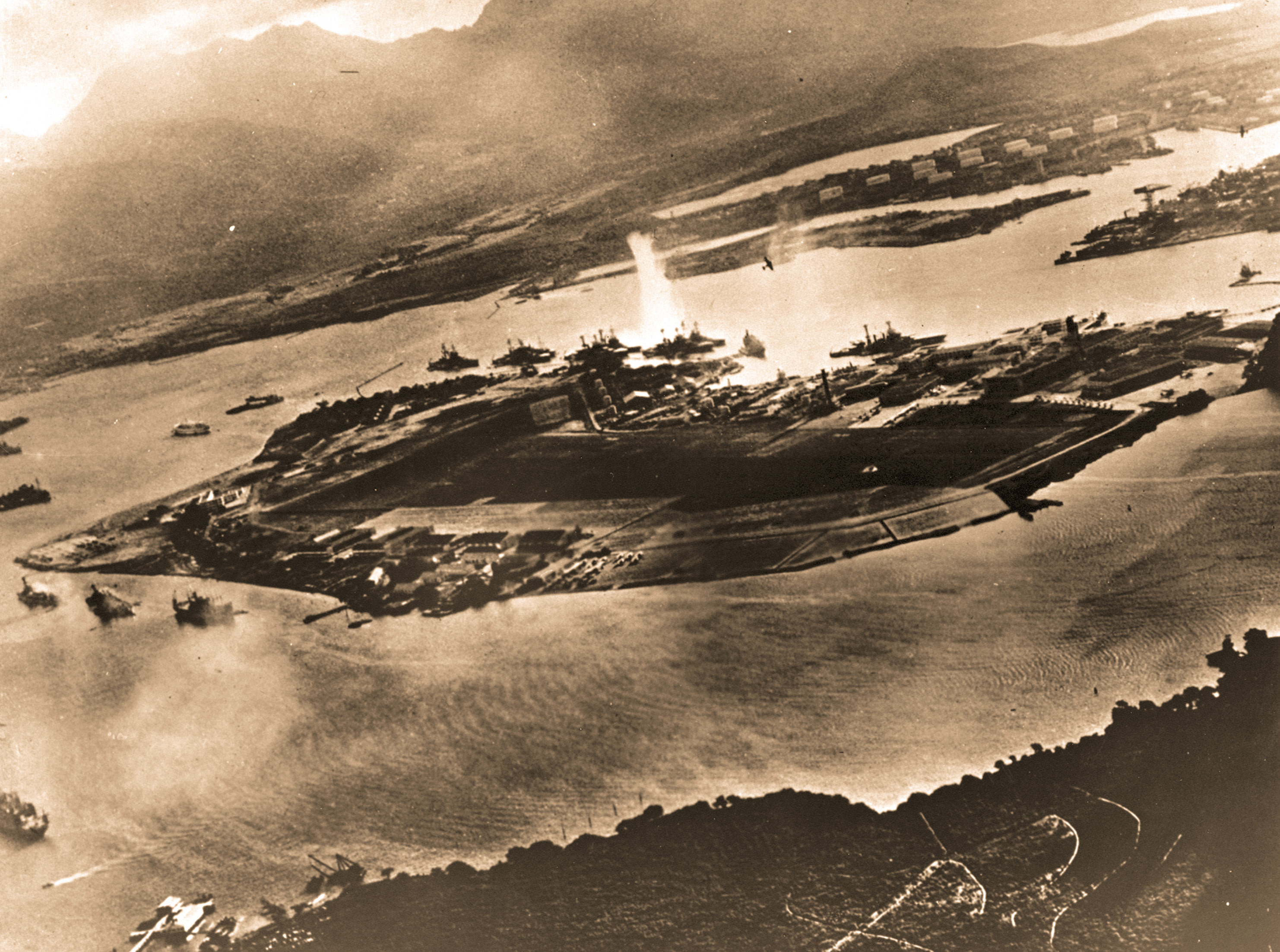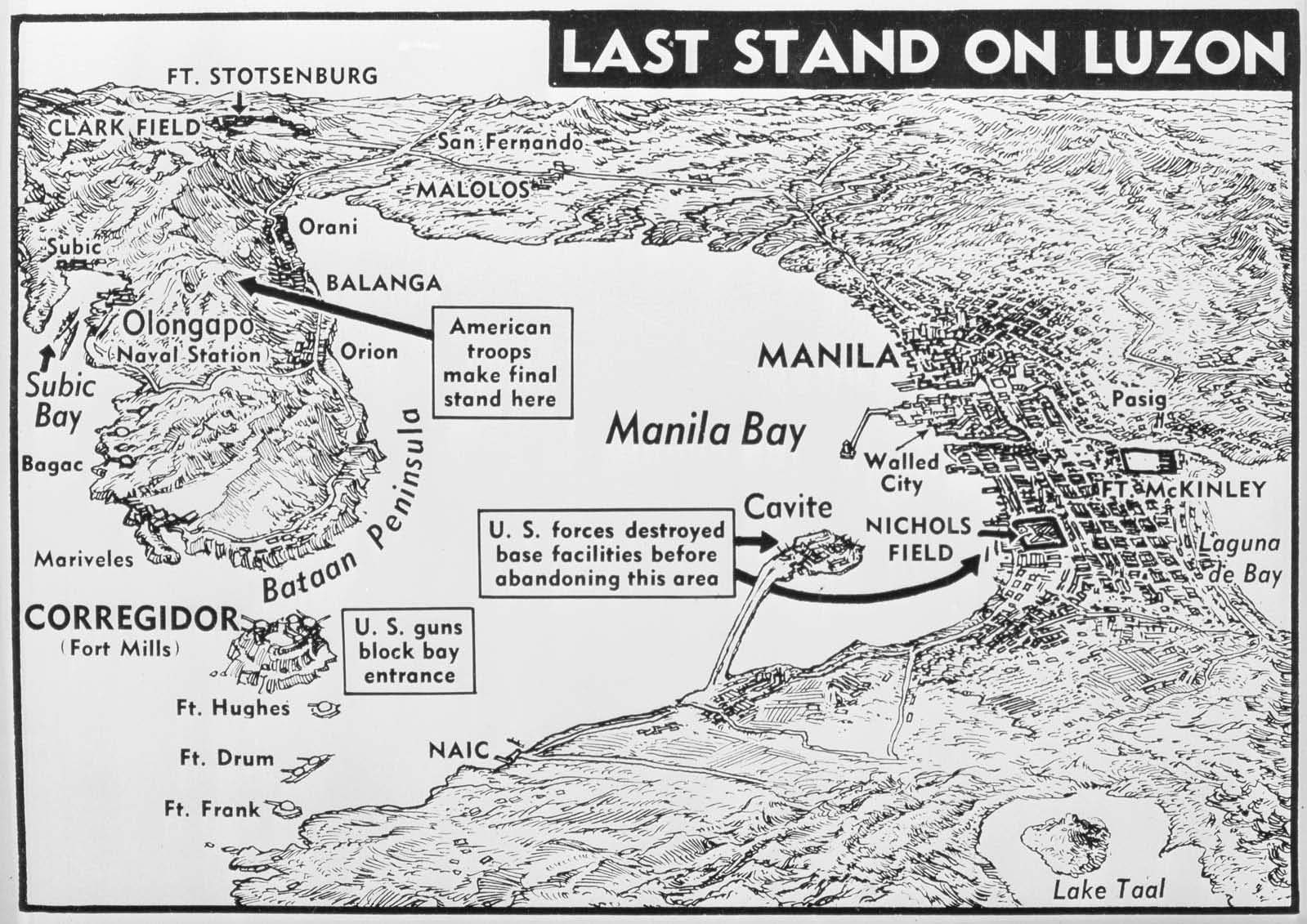


LOYALTY AND VALOR: HAWAI'I'S FILIPINO AND
FILIPINO AMERICAN SOLDIERS
War! Pearl Harbor and Bataan
This exhibit commemorates the loyalty, sacrifice and perseverance of Filipinos and Filipino Americans who fought for the United States during World War II, especially during the Philippine Campaign which liberated the Philippines from Imperial Japan.
Suspicious of Western empires and eager to protect its own economic interests Japan invaded China in 1931 to establish its own empire in Asia. On July 26, 2941, President Franklin D. Roosevelt invoked section 2(a)(12) of the Philippine Independence Act (Tydings-McDuffie Act of 1934) to order all organized military forces of the Philippine Commonwealth into service. General Douglas MacArthur was tasked with organizing and commanding the United States Armed Forces of the Far East (USAFFE) comprised of the Commonwealth Army, Philippine Scouts, Guerrilla Units and other designated forces.

December 7, 1941 Faced with severe trade embargos on essential resources needed in its conquest of Asia, Japan launched simultaneously attacks on the Philippines, Singapore, Hong Kong and military bases on O'ahu. The following day President Roosevelt asked Congress to declare "a state of war has existed between the United States and the Japanese Empire." Three days later Germany and Italy—Japan's Axis partners—declared war with the United States, officially drawing the United States into World War II.
As many as 250,000 Filipinos in the Philippines responded to Roosevelt’s call to arms. Many of them were, however, not properly trained or equipped by the time of Japan’s invasion. Even with prior intelligence on the invasion, General MacArthur implemented controversial strategies against the initial 80,000 battle-tested Japanese landing force. As on O'ahu the Japanese decimated the U.S. air power in the Philippines while it sat on the runway. What followed was a logistic nightmare, with troops separated from ammunition, food, supplies and communications.
As Filipino and American troops, especially the regular U.S. Army and Philippine Scout units, continued to fight valiantly, General MacArthur withdrew troops on Luzon to the Bataan Peninsula and island fortress of Corregidor on December 23, 1941. Without naval or air support Filipino and American forces were bombarbed by Japanese planes. MacArthur was ordered to evacuate from the Philippines for Australia on March 11, 1942. General Jonathan Wainwright assumed command, but without sufficient food, supplies or reinforcements, sickness and malnutrition took its toll, and the troops on the Bataan Peninsula surrendered on April 9, 1942.

The Battle of Bataan lasted four months in which the combined USAFFE forces on Luzon suffered 10,000 killed and 20,000 wounded. The 76,000 prisoners at Bataan (66,000 Filipinos, 10,000 Americans) exceeded the capability of the Japanese army to oversee them, so they were force-marched sixty-five miles north—without sufficient food or water—to San Fernando, then stuffed in over-crowded cargo trains enroute to Camp O'Donnell. While an estimated 10,000 prisoners managed to escape along the way, another 10,000 captives were beaten, shot, bayoneted, and, in many cases, beheaded. Only 54,000 prisoners reached the over-crowded camp where an additional 26,000 Filipinos and 1,500 Americans would eventually succumb to disease, sickness, malnutrition or execution. This surrender—the worst defeat in U.S. history—would forever be known as, "The Bataan Death March."
HOME |
Filipino-American
Historical Society of Hawaii
|
Help
Exhibits
| Publications
|
Collections
| Student/Teachers
Photographs
& Maps | Biographies & Oral Histories
| Community Organizations
WWI
Veterans | Centennial
Commission (2006)
Copyright © 2006 by the Filipino-American Historical Society of Hawaii. Updated 2020.